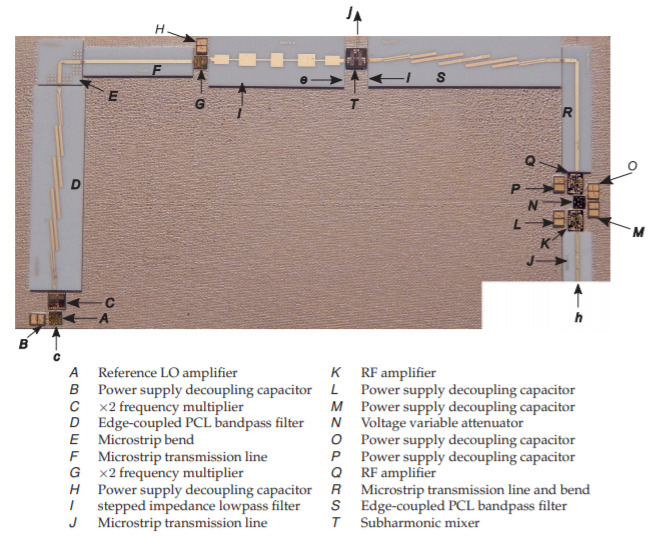1.3: Book Outline
- Page ID
- 46063
This book describes modules and tools required to design microwave systems using modules. A large number of modules are presented with the aim of building a ’module vocabulary.’ An engineer must know what modules are available before a microwave system can be designed using modules.
The first set of modules examined are filters in Chapter 2. These have the important task of only letting wanted signals through a circuit while blocking noise and unwanted signals. Then parallel coupled line (PCL) filters are considered in Chapter 3. A PCL filter is the most common type of microwave filter and is based on the inherent filtering properties of a pair of coupled transmission lines.
Chapter 4 introduces metrics for noise, distortion, and dynamic range and introduces the tools that are required to design systems of cascaded modules that minimize noise and distortion, and maximize dynamic range.
Chapter 5 develops knowledge of passive modules, particular ones that use diodes and switches. The final chapter, Chapter 6, considers mixer and source modules.
This book is the fourth volume in a series on microwave and RF design. The first volume in the series addresses radio systems [2] mainly following the evolution of cellular radio. A central aspect of microwave engineering is distributed effects considered in the second volume of the series [3]. Here the transmission lines are treated as supporting forward- and backward-traveling voltage and current waves and these are related to electromagnetic effects. The third volume [4] covers microwave network theory which is the theory that describes power flow in microwave circuits and can be used to describe transmission line effects. Topics covered in this volume include scattering parameters, Smith charts, and matching networks that

Figure \(\PageIndex{1}\): A \(14.4–15.35\text{ GHz}\) receiver module itself consisting of cascaded modules interconnected by microstrip transmission lines. Surrounding the microwave circuit are DC conditioning and control circuitry. RF in is \(14.4\text{ GHz}\) to \(15.35\text{ GHz}\), LO in is \(1600.625\text{ MHz}\) to \(1741.875\text{ MHz}\). The frequency of the IF is \(70–1595\text{ MHz}\). Detail of the frequency conversion section mounted on the mat is shown in Figure \(\PageIndex{2}\). The silk-screened mat provides a strain-relieving surface for mounting ceramic- and semiconductor-based modules.
enable maximum power transfer. The fifth volume in this series [5] considers amplifier and oscillator design and develops the skills required to develop modules.
The books in the Microwave and RF Design series are:
- Microwave and RF Design: Radio Systems
- Microwave and RF Design: Transmission Lines
- Microwave and RF Design: Networks
- Microwave and RF Design: Modules
- Microwave and RF Design: Amplifiers and Oscillators

Figure \(\PageIndex{2}\): Frequency conversion section of the receiver module shown in Figure \(\PageIndex{1}\). The reference LO is applied to the frequency conversion section at \(c\), the RF is applied at \(h\) following the isolator. The IF is output at \(j\).


